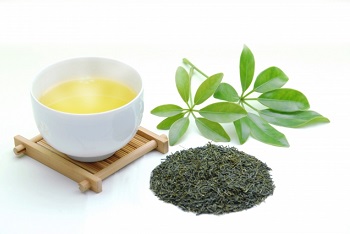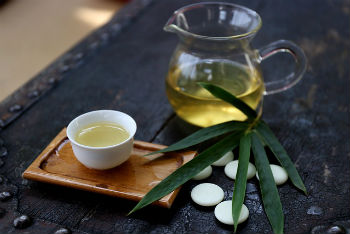The key to drink delicious Japanese tea
The flavor of Japanese tea can change greatly depending on how it is brewed.
Let's go over in detail the key points to brew delicious Japanese tea.
Use a teapot, and pour in a large serving of loose Japanese tea leaves
Pour in a large serving of loose Japanese tea leaves into your teapot.
Loose tea leaves can be packed into tea bags, but teapots are recommended because it is important for the leaves to swirl and blend inside the hot water in order to attain a delicious flavor.
Use hot water that has been boiled
Hot tap water can be used as well, but boiling it well first will remove the chlorine smell from the water.
Filtered water should also be boiled to brew a delicious pot of Japanese tea.
Pour the brewed Japanese tea evenly into your cups, until the very last drop
After steeping for about 30 seconds, begin pouring the tea into your cups.
The first pour will be a weak tea, which will get stronger as it is dispensed, so pour a little into each cup in turn, dividing the tea evenly until the last drop.
Guide to brewing Japanese tea
There are many kinds of Japanese tea, such as Gyokuro, Sencha, Bancha, and H?jicha, and each are brewed in slightly different ways.
Let's take a closer look at each type in addition to their respective characteristics
Gyokuro
The leaves of this tea are cultivated in the shade for about 20 days after sprouting.
It has very little astringent flavor, and it is characterized by abundant umami and a unique fragrance.
| Guide to Brewing Gyokuro (3 servings) | |
| Amount of loose tea leaves: | 2 tablespoons |
| Water temperature: | about 60 degrees Celsius |
| Infusion time: | 2 to 3 minutes |
| A single serving (1 cupful) is equivalent to 80 to 100 cc. | |
Sencha
The picked raw leaves are heated to contain the fermentation process, and it is the most commonly drank Japanese tea.
The tea leaves are steamed and pan-fired to prevent oxidation and thus can withstand a longer shelf-life.
| Guide to Brewing Sencha (3 servings) | |
| Amount of loose tea leaves: | 2 tablespoons |
| Water temperature: | 70 to 80 degrees Celsius |
| Infusion time: | 1 minute |
| A single serving (1 cupful) is equivalent to 80 to 100 cc. | |
- How to make cold-brewed Sencha
(5 servings) - Add cold water to 3 tablespoons of loose tea leaves, and then wait for a few minutes until the leaves open fully and a vivid green is extracted.
Bancha
This is the name for the lowest grade of Japanese tea, which includes all the teas that are not included in the main classifications of Japanese tea.
Hojicha is even called Bancha in regions such as Hokkaido, Tohoku, and Hokuriku.
| Guide to brewing Bancha (3 servings) | |
| Amount of loose tea leaves: | 2 tablespoons |
| Water temperature: | about 95 degrees Celsius |
| Infusion time: | 15 to 30 seconds |
| A single serving (1 cupful) is equivalent to 80 to 100 cc. | |
Hojicha
This is made by roasting teas such as Sencha, Bancha, and Kikucha at high heat to draw out fragrant aromas.
It is low in caffeine and characterized by a refreshing, light flavor.
| Guide to brewing Hojicha (5 servings) | |
| Amount of loose tea leaves: | 2 tablespoons |
| Water temperature: | about 95 degrees Celsius |
| Infusion time: | 15 to 30 seconds |
| A single serving (1 cupful) is equivalent to 80 to 100 cc. | |
Flavors differ depending on the types of tea leaves, amount, and temperature. Enjoy finding your favorite Japanese teas.








